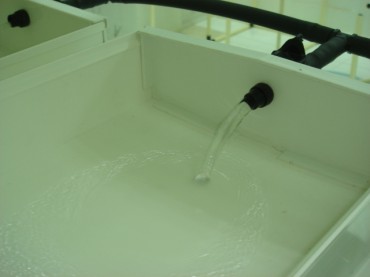Nutrient Solution Heating & Cooling
The beauty of hydroponic growing is that growers are able to grow crops in a controlled environment.
This allows them to extend cropping into higher priced periods or grow crops that are not normally suited to a particular climate.
A key aspect to this is being able to maintain a stable root zone temperature that promotes healthy growth and promotes oxygen retention within the nutrient solution.
Root zone temperatures that are too cold will slow or stunt growth and limit the uptake of nutrients.
Root zone temperatures that are too warm will limit oxygen availability & promote plant stress, which will put the plant at risk of disease or it will trigger a process of premature seeding called “bolting”.
Chilling the Nutrient Solution
As a nutrient solution heats up it is unable to hold as much oxygen as a cooler solution.
Therefore in warm climates, as a recirculating nutrient solution becomes too warm (i.e climbing beyond 27 degrees Celsius) it cannot hold enough oxygen to sustain the root system of a plant so this becomes a limiting factor. As the temperature continues to climb it eventually leads to suffocation, root death and loss of crop.
By chilling the nutrient solution and using an effective oxygenation system, this enables the solution to hold a higher proportion of oxygen and allows that crop to perform much better in a hot climate.
Care must be taken not to chill the nutrient solution too far below the ambient air temperature as this can shock the plants.
The temperature of the root zone must therefore be kept within a stable range without too many fluctuations.
An energy efficient nutrient chiller such as those recommended in the following pages is an ideal way to chill the solution and keep power costs down.
Heating the Nutrient Solution
For higher value crops such as tomatoes, capsicums and flowers which are grown in an enclosed greenhouse or glasshouse, the heating and cooling of the air inside the greenhouse is all that is required for managing the root zone temperatures of the crop.
These crops are also grown in a well aerated media, usually in drip fertigation systems, so oxygen availability to the root zone is already quite high.
For lower value, short term crops such as lettuces, which are usually grown in high density recirculating systems (e.g NFT), it is not economical to use expensive greenhouses with thermal screens or twin skin plastic and air heating systems.
For these crops the targeted heating and cooling of the root zone/nutrient solution is more energy efficient and effective.
Lettuce is traditionally a cool season crop so it doesn’t mind a cooler air temperature but it grows faster if the nutrient solution is heated over winter.
Alternatively over summer if the recirculating nutrient solution is chilled, this maximises the amount of oxygen available to the root zone and allows a higher quality plant to be grown in higher air temperatures that would normally be a significant limiting factor on the survival or quality of the crop.
The technology available for heating and cooling nutrient solutions is as follows & is covered in more detail on the following pages:
- Nutrient Solution Heater/Chillers (Reverse Cycle Heat Pumps)
- Heating Elements in Tanks


